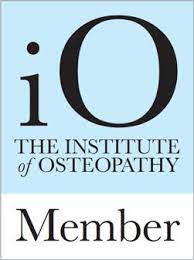Shoulder pain is a common issue that we treat daily in the clinic, and it can affect people of all ages, from athletes to office workers. Shoulder discomfort can be caused by many things but in a lot of cases a change in the movement of your shoulder blade can be a significant factor.
Your shoulder blade plays a vital role in how you move your arm, and a problem here can lead to a cascade of issues that ultimately result in pain. But why is this and how can you address it?
The Importance of Shoulder Blade Movement
The shoulder blade, or scapula, is a flat, triangular bone located on the back of the ribcage. It acts as a foundation for the shoulder joint and provides attachment points for numerous muscles involved in arm and shoulder movement. Proper scapular movement is essential for maintaining a stable shoulder, optimal range of movement, and distributing loads during physical activity.
What Does Your Shoulder Blade Do?
Scapulohumeral Rhythm: This refers to the coordinated movement between the scapula and the humerus (upper arm bone) when you raise your hand up. For every two degrees you raise your arm, the scapula must rotate upward by one degree. This rhythm ensures a smooth and efficient range of motion in the shoulder joint and prevents impingement or compression of structures like tendons and bursae.
- Keeping the shoulder stable: The scapula provides a stable base for the glenohumeral (shoulder) joint. Proper positioning and movement of the scapula helps maintain joint alignment and allows the muscles around the shoulder to function effectively.
- Force Transfer: During activities such as lifting, throwing, or pushing, the scapula helps transfer force from the upper body to the arms and hands. Poor scapular movement disrupts this force transfer, increasing the risk of strain or injury to surrounding structures.
How Does Poor Scapular Movement Leads to Shoulder Pain?
When the scapula does not move properly, it can contribute to several issues that cause shoulder pain:
- Scapular Dyskinesis: This term refers to abnormal or dysfunctional movement of the scapula. It can involve problems like winging (where the inside border of the shoulder blade lifts off the ribcage) or tilting (where the bottom angle of the scapula moves away from the body). Scapular dyskinesis alters the normal mechanics of the shoulder joint, leading to increased stress on the rotator cuff muscles, tendons, and other structures, causing pain and dysfunction.
- Shoulder Impingement: Poor scapular movement can lead to a condition known as shoulder impingement, where the tendons of the rotator cuff or the bursa (a fluid-filled sac that reduces friction) become compressed or “pinched” under the acromion (a bony prominence on the scapula). This impingement can cause pain, inflammation, and limited range of motion. Scapular dyskinesis, particularly downward rotation or lack of upward rotation, contributes to reducing the subacromial space, making impingement more likely.
- Rotator Cuff Tendinopathy: The rotator cuff muscles are responsible for stabilising the shoulder joint and facilitating movement. Poor scapular mechanics can increase the load on these muscles, leading to overuse injuries such as tendinopathy (degeneration of the tendons) or tears. Rotator cuff pain often presents as a dull ache in the shoulder, especially when lifting the arm overhead.
- Labral Tears: The labrum is a ring of cartilage that surrounds the socket of the shoulder joint, providing stability and cushioning. Poor scapular movement can cause excessive stress on the labrum, particularly during repetitive overhead motions or heavy lifting. This can lead to a tear in the labrum, resulting in pain, instability, and decreased shoulder function.
- Neck and Upper Back Pain: Poor scapular movement can also affect the muscles and joints in the neck and upper back. When the scapula is not positioned or moving correctly, it may cause compensatory movements in the cervical spine (neck) or thoracic spine (upper back), leading to muscle strain, tension, and referred pain.
Causes of Poor Scapular Movement
Several factors can contribute to poor scapular movement, including:
- Muscle Imbalances: An imbalance between the muscles that control scapular movement, such as the serratus anterior, trapezius, rhomboids, and pectoralis minor, can lead to dysfunctional scapular mechanics. For example, weakness in the serratus anterior or lower trapezius muscles can result in scapular winging, while tightness in the pectoralis minor can cause scapular tilting.
- Postural Issues: Poor posture, such as rounded shoulders or a forward head position, can affect scapular positioning and movement. Prolonged sitting or slouching can lead to muscle tightness and weakness that further exacerbates poor scapular mechanics.
- Injury or Trauma: Previous injuries to the shoulder, neck, or upper back, such as fractures, dislocations, or muscle strains, can affect the normal function of the scapula. Scar tissue, reduced mobility, or altered movement patterns following an injury can lead to long-term scapular dysfunction.
- Repetitive Overhead Activities: Athletes or individuals who frequently perform overhead motions, such as swimmers, throwers, or weightlifters, are at a higher risk for scapular dyskinesis. Repetitive stress on the shoulder joint without proper conditioning or technique can lead to muscle fatigue, weakness, and poor scapular movement.
- Neuromuscular Conditions: Certain neurological or muscular conditions, such as nerve injuries (e.g., long thoracic nerve palsy) or muscular dystrophy, can affect the control and strength of the muscles responsible for scapular movement, leading to dysfunction and pain.
How to Improve Scapular Movement and Reduce Shoulder Pain
Improving scapular movement involves a combination of exercises, posture correction, and addressing any underlying issues that may be contributing to the dysfunction:
- Strengthening Exercises: Focus on exercises that strengthen the muscles controlling the scapula, such as the serratus anterior, lower trapezius, and rhomboids. Examples include scapular push-ups, wall slides, and face pulls.
- Stretching and Mobility Work: Stretch tight muscles that may be contributing to poor scapular movement, such as the pectoralis minor and upper trapezius. Incorporate mobility exercises that promote proper scapular positioning, like thoracic spine extensions and shoulder blade squeezes.
- Postural Awareness: Change your posture throughout the day, especially if you spend long hours sitting or working at a desk. Ensure your workstation is ergonomically set up, and take regular breaks to stretch and reset your posture and get the blood moving.
- Technique Optimisation: If you do any sports or activities that involve repetitive overhead motions, work with a coach or physical therapist to optimise your technique and ensure you are using proper shoulder mechanics.
- Seek Professional Guidance: If you are experiencing persistent shoulder pain, consult a healthcare professional, such as an Osteopath or Physiotherapist. We can assess your condition, provide a tailored treatment plan, and guide you through exercises to improve scapular movement and reduce pain. You can book a free discovery call with one of our shoulder pain experts HERE







